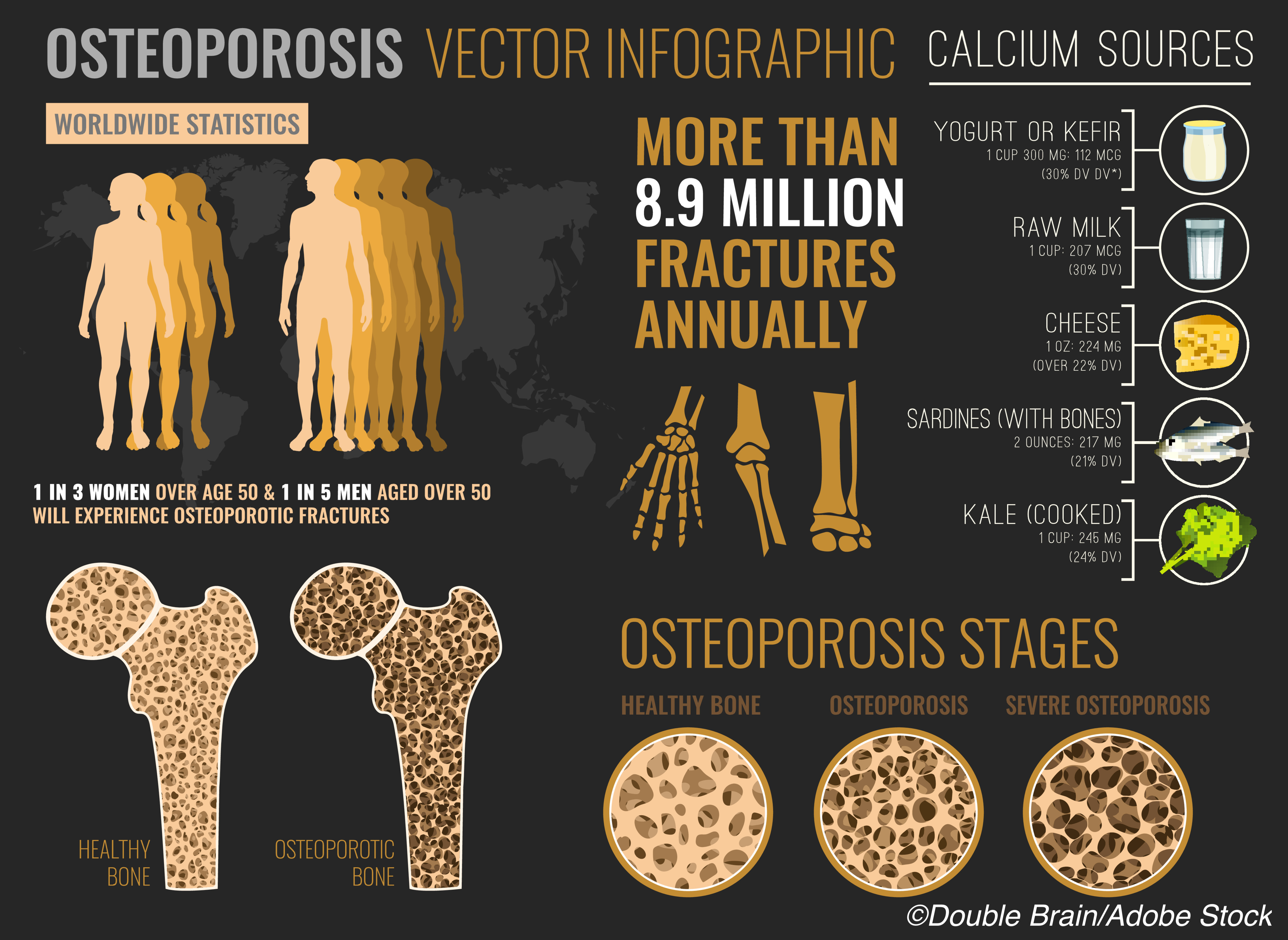Compared with meat-eaters, vegans and other vegetarians have higher risk of fractures, according to results from the EPIC-Oxford study, published in BMC Medicine. Specifically, researchers found that vegans had higher risks of total, hip, leg, and vertebral fractures, while pescatarians and vegetarians had a higher risk of hip fractures.
The differences in risk between these dietary groups and meat-eaters may be due, in part, to lower body mass index (BMI), they postulated.
“Previous epidemiological studies have shown that vegetarians had lower bone mineral density (BMD) than non-vegetarians, but the associations of vegetarian diets with fracture risks are unclear. Potential risk differences are plausible however, owing to differences in several dietary factors, such as the substantially lower intakes of calcium in vegans, lower intakes of dietary protein in both vegetarians and vegans, and the lower BMI of non-meat eaters,” wrote researchers led by Tammy Y. N. Tong, PhD, of the University of Oxford, Oxford, UK.
The observational EPIC-Oxford study is the first prospective study of diet and fracture in vegetarians and vegans.
To assess differences in fracture risks between vegetarians, vegans, and non-vegetarians (meat-eaters), Tong and colleagues collected dietary information at baseline (1993-2001) and at follow-up (in approximately 2010) from 15,499 vegetarians, 1,982 vegans, 8,037 pescatarians, and 29,380 meat-eaters and used data from hospital records and death certificates over an average of 17.6 years to estimate the risks of total fracture (n=3,941), as well as site-specific fractures, including arm (n=566), wrist (n=889), hip (n=945), leg (n=366), ankle (n=520), and others sites such as clavicle, rib, and vertebra (n=467).
“Overall, vegans in this study had higher risks of total and some site-specific fractures (hip, leg, vertebra) than meat eaters,” Tong and colleagues wrote. “The strongest associations were observed for hip fractures, for which fish eaters, vegetarians, and vegans all had higher risks.”
After adjusting for confounding factors, vegetarians and vegans had higher risks of total fractures compared with meat-eaters (HR: 1.11; 955 CI: 1.02-1.21). These associations remained significant in vegans after adjustment for dietary calcium (HR: 1.31; 95% CI: 1.10-1.57), total dietary protein (HR: 1.39; 95% CI: 1.16-1.67), and both dietary calcium and protein simultaneously (HR: 1.30; 95% CI: 1.08-1.56).
After adjusting for BMI, socio-economic and lifestyle factors, the highest risk of hip fracture occurred in vegans (HR: 2.31; 95% CI: 1.66-3.22), followed by pescatarians (HR: 1.26; 95% CI: 1.02-1.54), and vegetarians (HR: 1.25; 95% CI: 1.04-1.50). Compared with meat-eaters, vegans also had a higher risk of leg (HR: 2.05; 95% CI: 1.23-3.41), other main site (HR: 1.59; 95% CI: 1.02-2.50), and total fractures (HR: 1.43; 95% CI: 1.20-1.70).
Researchers did not find significant differences in higher risks for wrist or ankle fractures according to diet, both with and without adjusting for BMI. After adjusting for BMI, they found no significant differences in the risk of arm fractures.
“Overall, we found that compared with meat eaters, vegans had higher risks of total, hip, leg, and vertebral fractures, while fish eaters and vegetarians had higher risk of hip fractures. These risk differences were likely partly due to their lower BMI, and possibly to lower intakes of calcium and protein,” concluded Tong and colleagues.
However, they noted that lower calcium and protein intake may not be the only factors at play in creating these risks.
“The higher risks of fractures especially in the vegans remained significant after adjustment for dietary calcium and protein, which suggests that these factors may at most only partly explain the differences in fracture risks by diet group, and other factors may also contribute,” they concluded, urging further study of fracture risks and bone health in vegans.
Study limitations included its observational nature; the failure to include less serious fractures not requiring hospitalization, lack of data on osteoporosis, the use of anti-osteoporotic treatments, and any previous diagnoses of fractures before earliest available hospital data; lack of repeat measures of diet in all patients; and the inclusion of predominantly white, European participants.
-
Compared with meat-eaters, vegans had higher risks of total, hip, leg, and vertebral fractures, while pescatarians and vegetarians had a higher risk of hip fractures.
-
The causes for these increased risks are unknown but may include the lower intake of calcium and protein, as well as lower BMI typically found in vegans and other vegetarians.
E.C. Meszaros, Contributing Writer, BreakingMED™
This study was funded by the UK Medical Research Council and Wellcome Trust Our Planet Our Health.
Tong reported no disclosures.
Cat ID: 192
Topic ID: 86,192,438,15,187,192,94,925




Create Post
Twitter/X Preview
Logout